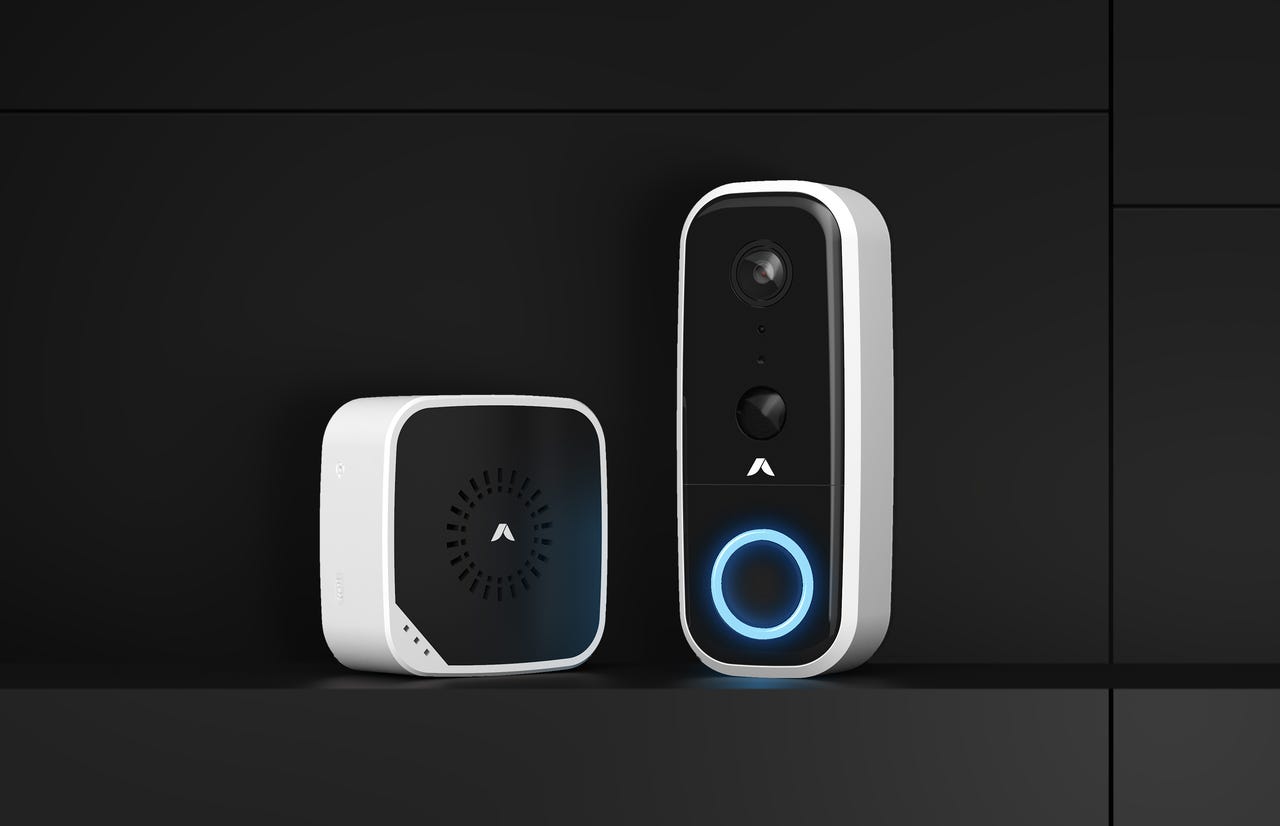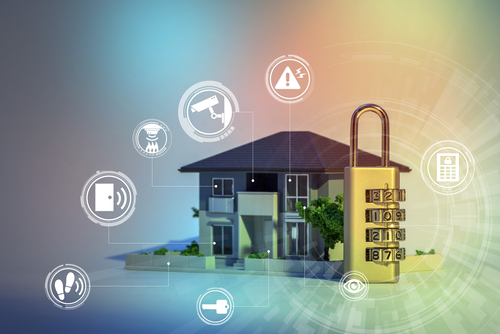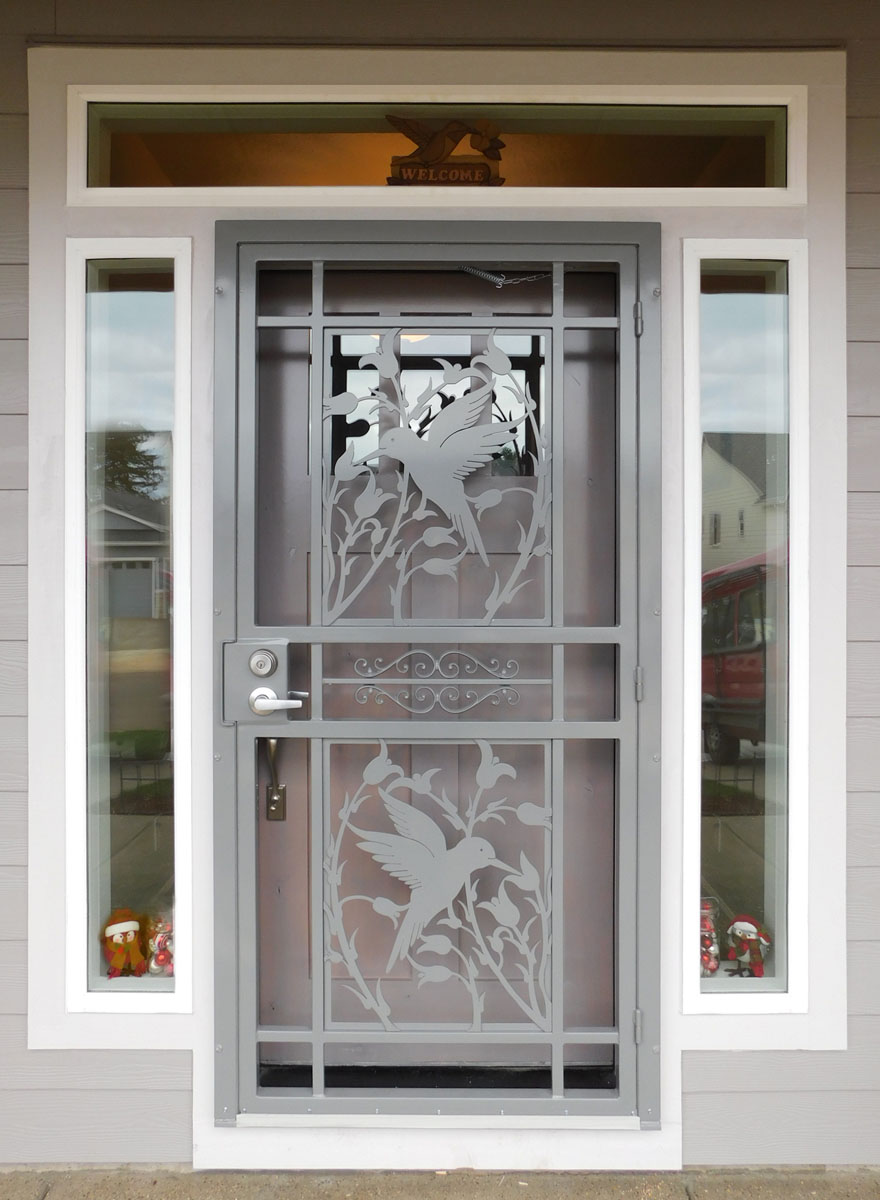
Door sensors allow you to track who comes and leaves from your home. Also, they're a great addition to a home security systems as they can alert if someone opens your door or closes it while the system is off.
Entry Sensor Simplisafe
Simplisafe is an entry sensor that's easy to use and install on either your front or rear door. It is compatible for Simplisafe Gen 3 Home Security Systems and comes with adhesive pre-applied. It's a good choice for people who want to keep the door open to their home but still need some peace of mind. It can also be used as a backup doorbell, so you can get an alert if a guest comes and goes even when the alarm is disarmed.
YoLink Door Sensor
YoLink could be a good option if you're looking for a smarter, more modern door sensor. It can also work with Amazon Alexa, and other devices. It has a small hub that makes it easier to integrate with other smart devices. The battery can last up to 18-months with moderate usage.

This is a very popular door sensor, as it's simple to install and compatible with a variety of smart home platforms. This is a great choice for those who are looking for a quality door sensor that has a long-lasting battery and is affordable.
Sensor Door Open
One of the most important things to understand about a door sensor is how it works. The door sensor uses a reed-switch and magnet to form a closed circuit. When the door is opened the magnet and the switch separate and the circuit is broken, triggering the alarm.
What is the difference between a Surface Mounted Contact and a Recessed Door sensor?
Surface-mounted contact are installed on the outer frame of the door. These contacts are usually easy to install. However, they can be pricier than recessed.
They are more difficult to install than surface-mounted sensors because they need holes in the frame and door. These sensors are popular with homeowners who want their sensors to be hidden. However, they can be difficult to clean.

How Does A Door Sensor Work
The most basic type of door sensor is a contact sensor. It uses a reed button and a magnet to create an electrical circuit. Once the reed switch is in close proximity to a magnet, the electrical flow is blocked and a circuit cannot be completed. The reed buttons are separated from the magnet and allow electricity to flow through the sensor. This triggers an alarm.
A contact sensor also works as a door sensor. This type uses a switch that blocks electrical flow when in close proximity with the magnet. When the reed-switch is separated from magnet, an alarm is sent to your Cove Touch Alarm Panel.
FAQ
What is the best wireless security device you can purchase?
D-Link Wireless Security System has been my top choice for wireless security. It is the most affordable system available. All you need in one package. It includes a camera and motion sensor as well as a remote control. You just need to plug it in and follow these simple instructions.
Do motion sensors come with alarms?
Motion sensor alarm systems have been around for decades, and they have become increasingly popular due to the rising number of break ins and thefts. These devices can be too costly and do not work well inside cabinets. It is worth looking into a motion sensor system if you want to protect yourself from home intruders.
What is the best system for home surveillance?
Consider purchasing a home security camera system to protect your family. These systems are easy to use and they provide great benefits for both homeowners and renters. They allow you to monitor your home remotely from any smartphone, tablet, laptop, or other mobile device.
Which is the best home security system?
ADT Pulse, Ring Alarm, Vivint Home Security Security, Protect America and Vivint Smart Home Security are the most popular home alarm systems.
What is the number 1 home security system?
Ring Video Doorbell Pro is the number one home security system. It allows you speak and see anyone anywhere, anytime using your smartphone. You can also capture video and send it to family and friends by text message or email.
What are the differences between home security systems?
You need to assess the level of threat in your community. A burglary alarm might be necessary if you live in a high-crime area. If you live in a rural area where there aren't many burglaries, then you may not need as much security.
Consider whether you are prepared to pay more for advanced features. Some systems have cameras built in while others do not. Some allow you to monitor your house remotely, while others require you to be physically present in order to view the footage.
Which security system is best?
How valuable your home and personal belongings are will dictate the type of security system you choose. You can go with a basic alarm system which is inexpensive but doesn't offer too much protection. You can choose to get a more powerful alarm system with better features such as remote monitoring, access control, and video surveillance.
Statistics
- Most home security companies will charge you around 75% of the remaining term of your contract if you cancel early—and some require 100%.Related questionsWhat type of contract length can I expect from security providers?Home security system cancellation (safewise.com)
- Depending on your insurance, 24/7 professional monitoring may qualify you for as much as 15% off your premium. (safewise.com)
- Related questionsHome security systems that are 100% DIY (safewise.com)
- Cove sets you free without punishing penalties and fees, unlike other security solutions that charge 75% to 100% of your remaining contract. (safewise.com)
External Links
How To
What to look for in a Home Security Monitoring company
When choosing a home security company, there are many factors to consider. You must first make sure they know what they're doing. Ask around to determine if someone else has used this service provider. You should not use them if they don't have any recommendations. Ask your family and friends if they would recommend this company. This is a great way to get honest feedback and opinions from people who have used the service. Read reviews and visit the website to learn more about the company. You can visit their website and other social media sites, such as Facebook and Twitter. Seek out customer feedback and complaints. You can look at negative comments and figure out why. It could mean something bad happened to a client.
Next, check references. You can also call past clients to ask how the service was received. Were they happy with the quality of the work? Was everything done according to plan? Verify that the company you used was trustworthy and reliable. They didn't just give you a quote and disappear without finishing the job.
Next, make sure that the company is insured and licensed. A good insurance policy means that if anything happens to your property while you're away, they'll cover the damages. The best companies offer 24/7 assistance so that you don’t have to worry about calling during business hours.
Also, check whether the company provides free installation and maintenance. Companies may charge an additional fee for these services. That's because it takes time and money to maintain and install equipment. Some companies provide only basic monitoring services, which may not be sufficient for most homeowners.
Ensure that the company has reasonable prices. Don't pay too much for a poor product. When comparing different providers, always compare apples to apples. One provider may charge $150 per month for basic monitoring while another provider might charge $200 per year for the same service. If you want to save money, shop around.